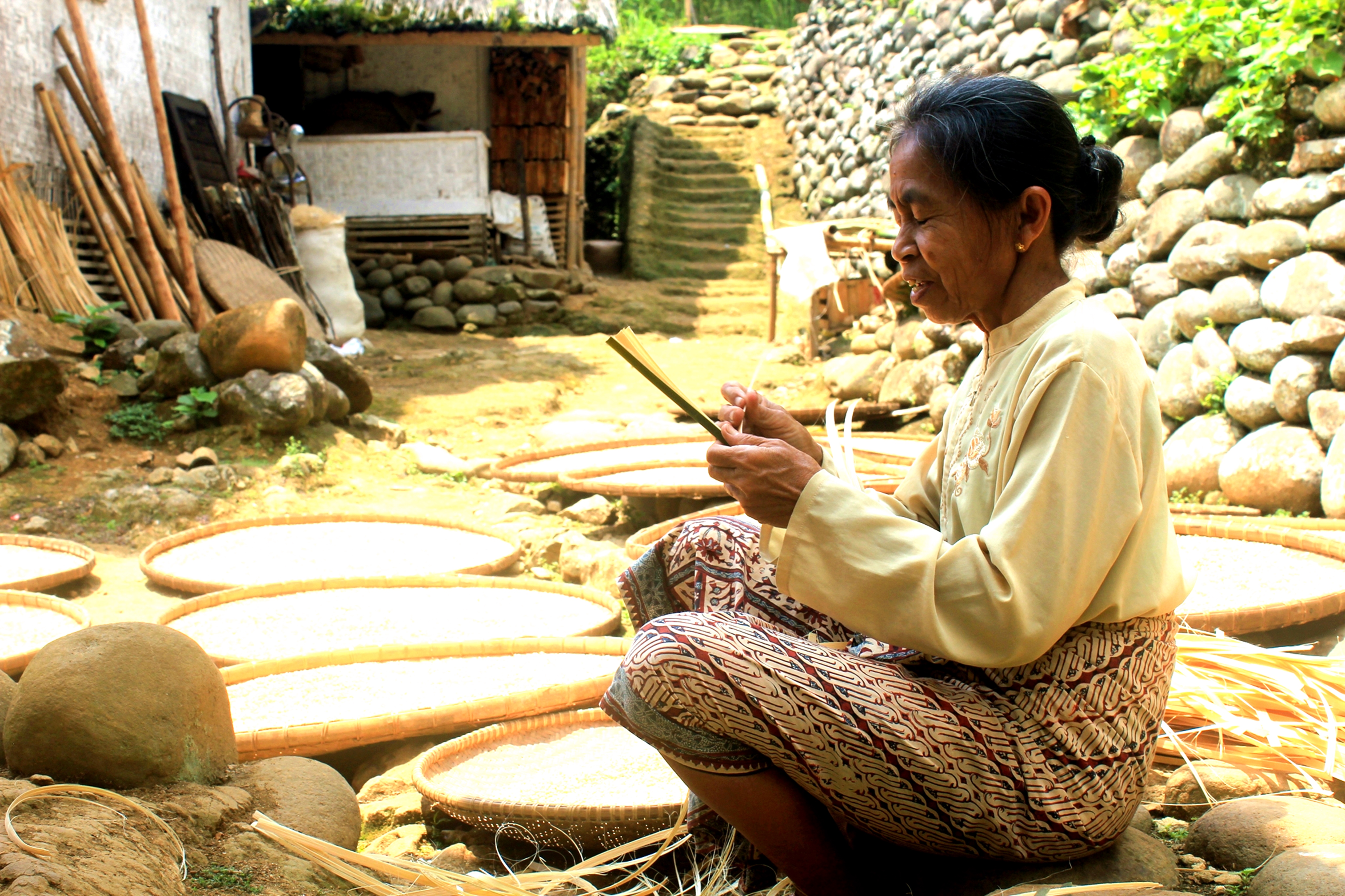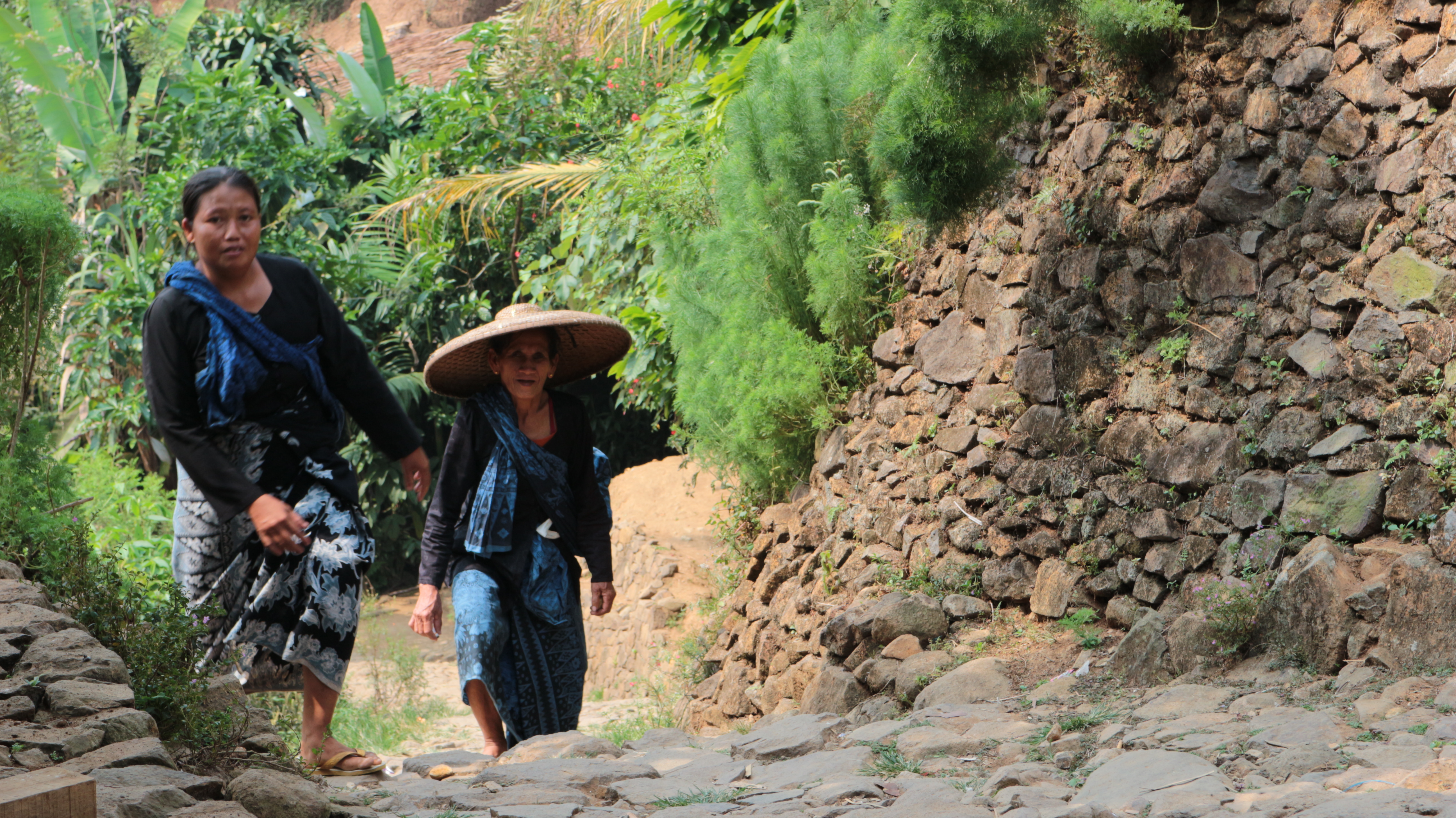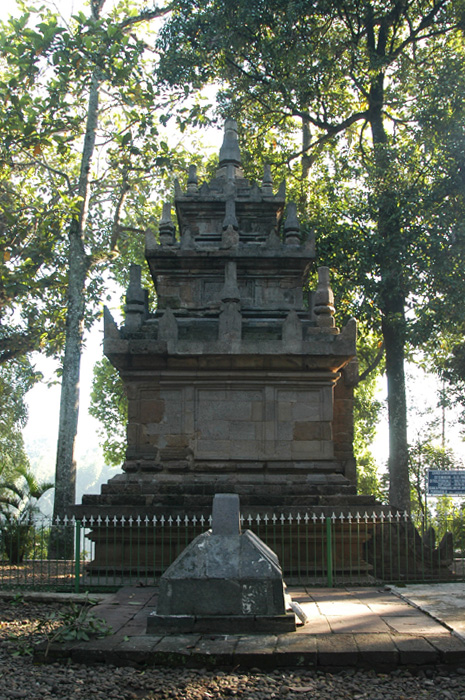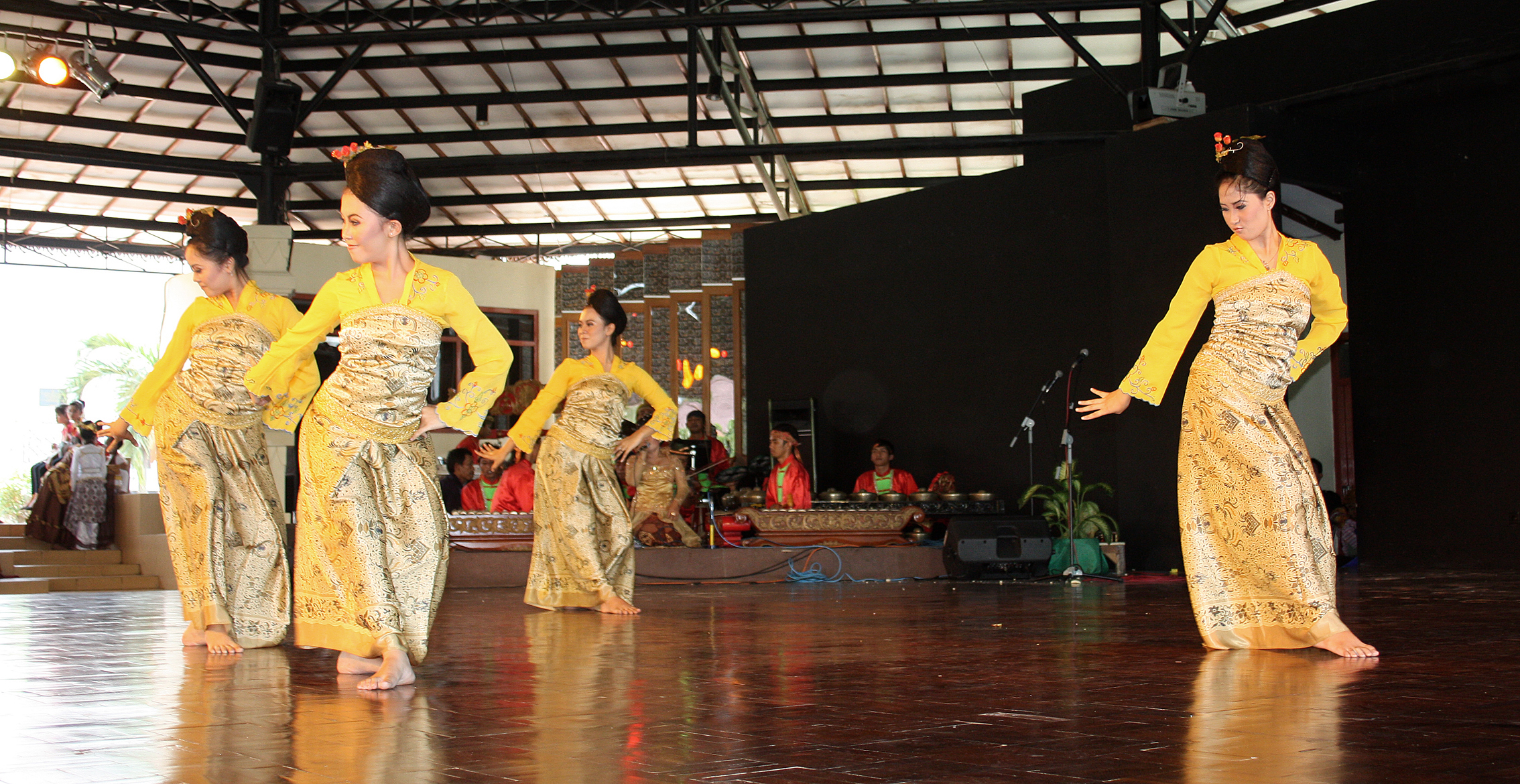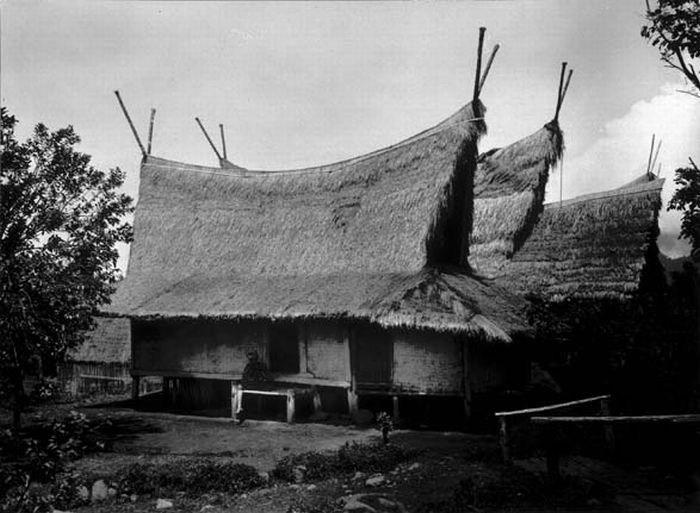|
Kampung Naga
Kampung Naga (Sundanese: ) is a traditional Sundanese hamlet located in the Neglasari Village area of Salawu district in Tasikmalaya Regency, West Java Province, Indonesia. ''Kampung Naga'' is notable for its traditional houses which is characterized by its functionality, simplicity, modesty, and its use of natural thatched materials, and its quite faithful adherence to the harmony with the nature and environment. Etymology Etymologically, the term "''Kampung Naga''" comes from Sundanese, the Sundanese people originally called the place on the edge of a cliff which in Sundanese is "dina gawir" which the locals later shortened to "nagawir" and then "naga". Community and traditions Kampung Naga is a traditional village which is inhabited by Sundanese traditional community that holds a strong tradition of preserving the way of life their ancestors. The differences are quite visible when compared with other communities surrounding Kampung Naga. The community are living in an atmosph ... [...More Info...] [...Related Items...] OR: [Wikipedia] [Google] [Baidu] |
Sundanese Script
Standard Sundanese script (''Aksara Sunda Baku'', ) is a writing system which is used by the Sundanese people. It is built based on Old Sundanese script (''Aksara Sunda Kuno'') which was used by the ancient Sundanese between the 14th and 18th centuries. Currently the standard Sundanese script is also commonly referred to as the Sundanese script. History Old Sundanese was developed based on the Pallava script of India, and was used from the 14th until the 18th centuries. The last manuscript written in Old Sundanese script was ''Carita Waruga Guru.'' From the 17th to the 19th centuries, Sundanese was mostly spoken and not written. Javanese and Pegon scripts were used to write Sundanese during this period. In 1996, the government of West Java announced a plan to introduce an official Sundanese script, and in October 1997, Old Sundanese script was chosen and renamed to ''Aksara Sunda.'' Typology The standardized script has 32 basic characters, consists of 7 ''aksara swara'' (ind ... [...More Info...] [...Related Items...] OR: [Wikipedia] [Google] [Baidu] |
Etymology
Etymology ()The New Oxford Dictionary of English (1998) – p. 633 "Etymology /ˌɛtɪˈmɒlədʒi/ the study of the class in words and the way their meanings have changed throughout time". is the study of the history of the Phonological change, form of words and, by extension, the origin and evolution of their semantic meaning across time. It is a subfield of historical linguistics, and draws upon comparative semantics, Morphology_(linguistics), morphology, semiotics, and phonetics. For languages with a long recorded history, written history, etymologists make use of texts, and texts about the language, to gather knowledge about how words were used during earlier periods, how they developed in Semantics, meaning and Phonological change, form, or when and how they Loanword, entered the language. Etymologists also apply the methods of comparative linguistics to reconstruct information about forms that are too old for any direct information to be available. By analyzing related ... [...More Info...] [...Related Items...] OR: [Wikipedia] [Google] [Baidu] |
Sundanese Culture
The Sunda or Sundanese ( id, Orang Sunda; su, ᮅᮛᮀ ᮞᮥᮔ᮪ᮓ, Urang Sunda) are an indigenous ethnic group native to the western region of Java island in Indonesia, primarily West Java. They number approximately 42 million and form Indonesia's second most populous ethnic group. They speak the Sundanese language, which is part of the Austronesian languages. The western third of the island of Java, namely the provinces of West Java, Banten, and Jakarta, as well as the westernmost part of Central Java, is called by the Sundanese people ''Tatar Sunda'' or ''Pasundan'' (meaning Sundanese land). Sundanese migrants can also be found in Lampung and South Sumatra, and to a lesser extent in Central Java and East Java. The Sundanese people can also be found on several other islands in Indonesia such as Sumatra, Kalimantan, Sulawesi, Bali and Papua. Origins Migration theories The Sundanese are of Austronesian origins and are thought to have originated in Taiwan. They migr ... [...More Info...] [...Related Items...] OR: [Wikipedia] [Google] [Baidu] |
Suharto
Suharto (; ; 8 June 1921 – 27 January 2008) was an Indonesian army officer and politician, who served as the second and the longest serving president of Indonesia. Widely regarded as a military dictator by international observers, Suharto led Indonesia through a dictatorship for 31 years, from the fall of Sukarno in 1967 until his own resignation in 1998. The legacy of his 31-year rule, and his US$38 billion net worth, is still debated at home and abroad. Suharto was born in the small village of Kemusuk, in the Godean area near the city of Yogyakarta, during the Dutch colonial era. He grew up in humble circumstances. His Javanese Muslim parents divorced not long after his birth, and he lived with foster parents for much of his childhood. During the Japanese occupation era, Suharto served in the Japanese-organized Indonesian security forces. During Indonesia's independence struggle, he joined the newly formed Indonesian Army. There, Suharto rose to the rank of major g ... [...More Info...] [...Related Items...] OR: [Wikipedia] [Google] [Baidu] |
Baduy People
Baduy people (sometimes spelled as Badui or Kanekes) are an indigenous Sundanese ethnic group native to the southeastern part of Banten specifically Lebak Regency on western hemisphere of Java island in Indonesia. Etymology The term is a short form derived from in Baduy language, it is the native Sundanesic term which refers to the endemic vine plant in western hemisphere of Java island which are usually used as herbal medicine since ancient times. As part of Sundanesic family, the term also known in Old Sundanese and Sundanese languages which bears the same meaning; the Cibaduyut region in the Sundanese cultural land region may derived from the same etymology. It is likely that in ancient times, there was once a river called the Baduyut River, because the term () itself literally means 'Baduyut River' in Sundanese language; so it is very possible if this tribe was once named after the name of that river. However, the Baduy people sometimes would prefer to be called as ( ... [...More Info...] [...Related Items...] OR: [Wikipedia] [Google] [Baidu] |
Garut Regency
Garut Regency is a Regency (Indonesia), Regency in the West Java province of Indonesia. It covers an area of 3,065.19 km2 (1,186.91 mi2). Geographically, it lies between 6°57′34″ – 7°44′57″ South latitude and 107°24′34″ – 108°7′34″ East longitude. The population at the 2010 census was 2,404,121, and at the 2020 census was 2,585,607; the official estimate as at mid 2021 was 2,604,787. South Tarogong (''Tarogong Kidul'') is the regency seat. Adjacent regencies It is bordered by: * Eastern side: Tasikmalaya Regency * Western side: Cianjur Regency and Bandung Regency * Northern side: Sumedang Regency * Southern side: Indian Ocean Geography In general, Garut has a cool but tropical climate, with an average temperature of 24 °C (76 °F). Average annual rainfall is 2,590 mm (102 inches). This area includes valley territory surrounded by volcanoes (Mount Karacak: 1,838 m, Mount Cikuray: 2,821 m, ... [...More Info...] [...Related Items...] OR: [Wikipedia] [Google] [Baidu] |
Garut
Garut is a district and town in West Java of Indonesia, and the former capital of Garut Regency. It is located about 75 km to the southeast of the major city of Bandung. History The modern history of Garut started on March 2, 1811 when Balubur Limbangan Regency was dissolved by Governor General Herman Willem Daendels, because the area's production of coffee had decreased and the Regent, Tumenggung Wangsakusumah II had refused a command to plant indigo. Balubur Limbangan Regency then comprised 6 districts: Balubur, Malangbong, Wanaraja, Wanakerta, Cibeureum and Papandak. The Limbangan Regency, which has now become the Garut Regency, was founded by Lieutenant-Governor Stamford Raffles on 16 February 1813. RAA. Adiwijaya, who governed from the 1813 until 1821, was the first Regent of the Garut Regency. He was well known as Dalem Cipeujueh. The town of Suci was originally the capital of the new Limbangan Regency. However it was thought that Suci did not meet the requirements ... [...More Info...] [...Related Items...] OR: [Wikipedia] [Google] [Baidu] |
DSC00029 Java Little Sundanais Traditional Village Kampung Naga (6219569245)
DSC may refer to: Academia * Doctor of Science (D.Sc.) * District Selection Committee, an entrance exam in India * Doctor of Surgical Chiropody, superseded in the 1960s by Doctor of Podiatric Medicine Educational institutions * Dalton State College, Georgia, United States * Daytona State College, Florida, United States * Deep Springs College, California, United States * Dixie State College, now Utah Tech University, Utah, United States * Dyal Singh College, Delhi, India * DSC International School, Hong Kong, China Science and technology * DECT Standard Cipher, an encryption algorithm used by wireless telephone systems * Dice similarity coefficient, a statistical measure * Differential scanning calorimetry, or the differential scanning calorimeter * Digital selective calling in marine telecommunications * Digital setting circles on telescopes * Digital signal controller, a hybrid microcontroller and digital signal processor * Digital still camera, a type of camera * Display Strea ... [...More Info...] [...Related Items...] OR: [Wikipedia] [Google] [Baidu] |
Thatching
Thatching is the craft of building a roof with dry vegetation such as straw, water reed, sedge (''Cladium mariscus''), rushes, heather, or palm branches, layering the vegetation so as to shed water away from the inner roof. Since the bulk of the vegetation stays dry and is densely packed—trapping air—thatching also functions as insulation. It is a very old roofing method and has been used in both tropical and temperate climates. Thatch is still employed by builders in developing countries, usually with low-cost local vegetation. By contrast, in some developed countries it is the choice of some affluent people who desire a rustic look for their home, would like a more ecologically friendly roof, or who have purchased an originally thatched abode. History Thatching methods have traditionally been passed down from generation to generation, and numerous descriptions of the materials and methods used in Europe over the past three centuries survive in archives and early publica ... [...More Info...] [...Related Items...] OR: [Wikipedia] [Google] [Baidu] |
Sundanese People
The Sunda or Sundanese ( id, Orang Sunda; su, ᮅᮛᮀ ᮞᮥᮔ᮪ᮓ, Urang Sunda) are an indigenous ethnic group native to the western region of Java island in Indonesia, primarily West Java. They number approximately 42 million and form Indonesia's second most populous ethnic group. They speak the Sundanese language, which is part of the Austronesian languages. The western third of the island of Java, namely the provinces of West Java, Banten, and Jakarta, as well as the westernmost part of Central Java, is called by the Sundanese people ''Tatar Sunda'' or ''Pasundan'' (meaning Sundanese land). Sundanese migrants can also be found in Lampung and South Sumatra, and to a lesser extent in Central Java and East Java. The Sundanese people can also be found on several other islands in Indonesia such as Sumatra, Kalimantan, Sulawesi, Bali and Papua. Origins Migration theories The Sundanese are of Austronesian origins and are thought to have originated in Taiwan. They migr ... [...More Info...] [...Related Items...] OR: [Wikipedia] [Google] [Baidu] |
Sundanese Traditional House
Sundanese traditional house ( su, imah adat Sunda) refers to the traditional vernacular houses of Sundanese people predominantly inhabited Western parts of Java island (West Java and Banten provinces), Indonesia. The architecture of a Sundanese house is characterized by its functionality, simplicity, modesty, uniformity with a little details, its use of natural thatched materials, and its quite faithful adherence to the harmony with the nature and environment. Form and materials The Sundanese traditionally maintain the knowledge of their ancestors and their traditional lifestyles in a close harmony with nature, which extends to their construction methods; using local materials of timber, stone, bamboo, thatched materials and palm leaves. Sundanese traditional houses mostly take basic form of gable roofed structure, commonly called ''kampung'' style roof, made of thatched materials (''ijuk'' black ''aren'' fibers, ''hateup'' leaves or palm leaves) covering wooden frames and beam ... [...More Info...] [...Related Items...] OR: [Wikipedia] [Google] [Baidu] |
